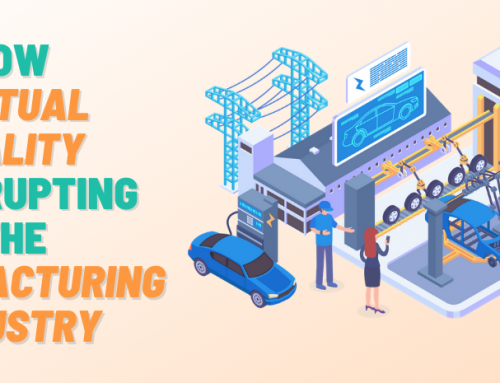
How do we know if our business became more successful thanks to VR?
It would be hard to tell if it had not been for metrics and KPIs that in marketing campaigns happen through the lens of VR.
To numerous consumers and businesses AR and VR seem like the next big thing that could replace mobile computing for good.
Goldmann Sachs and World Economic Forum have stated in their research that AR and VR by 2025 will become $95 billion market, while the most of VR usage, especially in the early days will happen in the entertainment i.e. creative industries.
Particularly prominent industries are gaming, live events, video entertainment and retail, but as time goes by the industries as diverse as healthcare, education, the military and real estate will benefit from VR.
Below are key metrics to bear in mind so that your marketing campaign in vr does the work:
1. CALCULATE THE COST REDUCTION AND SAVINGS VR MARKETING SOLUTION PROVIDED FOR YOU
“Virtual prototyping” allows us to shorten the time and cost of iteration in product development while also improving the quality of the end product. For example, one design firm passed $50,000 worth of savings to a client in the aeronautics industry by using VR prototyping to abolish two physical prototype cycles and eliminate the time that would have been required for the assembly of custom samples.
2. IF YOUR PROJECT RELIES ON A COMMUNITY, ESTIMATE THE NUMBER OF CREATORS ENGAGED AND WHAT ROI THIS BRINGS TO THE MARKETING CAMPAIGN IN VR
Thanks to VR, the barriers to entry are lower for creative minds no matter if they are top-notch professionals with years of experience or hobbists who got the grip of VR tools and design while learning from tutorials.
The technology already exists to process 360-degree imagery in hours—something that until recently would take days—and is within reach for filmmakers on small budgets. In the same way that smart phones and apps moved mobile photography outside the realm of professionals and enthusiastic hobbyists, we can expect AR and VR to open up new creative avenues for all of us.
3. ASSESS GAZE-THROUGH-RATE AND EFFECTIVENESS OF CONVERSION WITH AR AND VR ADVERTISEMENTS
The context of immersive technologies, the term “gaze-through rate” has been coined to describe the effectiveness of an augmented or virtual advertisement in capturing user attention. Companies such as Retinad offer analytics to track behavior on AR and VR devices with an aim to increase the conversion rate from advertisements as well as user engagement with content. Thus far, they have been shown to be up to 30 times more effective in engaging users than mobile advertisements.
4. ENABLE E-COMMERCE DECISIONS OR PURCHASES AND ACTIVATIONS ON THE SPOT
Adam Alter, associate professor of marketing at NYU’s Stern School of Business, describes the strategy as a “brute force, big data-driven” approach: “Companies A/B test different features of a product and iterate to the point that is maximally difficult to avoid.” In addition, deep-pocketed companies have “teams of psychologists working according to the latest information to make humans more engaged.”
Indeed, evidence from the last decade shows that, while our overall leisure time is increasing, we are spending more of it using screen-based devices
The more time we spend on a device, the more data there is to collect about our interactions and the more targeted product offerings become—a reinforcing cycle that is likely to speed up as immersive technologies enter the mainstream.
Still, bear in mind the lack of ownership over personal data may push users away from the long-term adoption of new technologies. A report by the World Economic Forum shows that 47 percent of people across six countries have stopped or avoided using a service because of inadequate user controls and this figure rises as high as 70 percent for China.
5. FIGURE OUT THE DATA MONETIZATION MODEL IN VR
Subscription-based services are one such example: YouTube Red will eliminate advertisements for paying users, as does Spotify Premium. These are examples where users can pay to enjoy advertising-free experiences and which do not come at the cost to the content developers since they will receive revenue in the form of paid subscriptions.
6. MEASURE THE LENGTH OF TIME PEOPLE SPEND IN VR AND ESTIMATE THAT BEHAVIOUR TO YOUR ADVANTAGE
More and more people increase the level of their screen time so consuming VR content is not such a distant future.
This could be game-changing: users will no longer view content but will be placed inside ever-expanding virtual worlds and find themselves at the center, hence the “immersive” nature of the technology.
7. CREATE MECHANISMS TO PROTECT CERTAIN TYPES OF USERS FROM THE CONTENT THAT IS NOT AIMED AT THEM
Short-term measures also exist to address overuse in the form of stopping mechanisms. Pop-up usage warnings once healthy limits are approached or exceeded are reportedly supported by 71 percent of young people in the UK. Services like unGlue allow parents to place filters on content types that their children are exposed to, as well as time limits on usage across apps.
All of these could be transferred to immersive technologies, and are complementary fixes to actual regulation, such as South Korea’s Shutdown Law. This prevents children under the age of 16 from playing computer games between midnight and 6am. The policy is enforceable because it ties personal details—including date of birth—to a citizen’s resident registration number, which is required to create accounts for online services.
Alternative metrics could include a net promoter score for software, which would indicate how strongly users—or perhaps even regulators—recommend the service to their friends based on their level of fulfillment or satisfaction with a service.
8. IF EMPATHY MATTERS FOR YOUR BUSINESS, VR CAN MEASURE AND NURTURE IT
Thanks to the increased empathy and the immersive nature of VR, people may be compelled to take a particular action that involves a behavior change or more value for their business.
Although there are suggestions that increased consumption of digital media can cause a decline in empathy, many artists working with AR and VR are convinced that the medium will become the “ultimate empathy machine” fostering a society with informed perspectives of other communities and identities.
Gabo Arora, founder and president of Lightshed and a creative director and senior advisor at the United Nations, explains: “You’re discovering a new grammar of storytelling and emotions.” If the optimists are right, we could be well on the way to a more informed and creative world.
There is also promise for AR and VR to provide immersive learning experiences. Beyond immediate gamified learning, AR and VR biosensors have been harnessed in therapeutic domains, allowing one man to drive for the first time in his life using just his brain. “[Immersive technologies] are a form of brain augmentation that networks our biological systems to a digital device,” says Tan Le, CEO of Emotiv.


